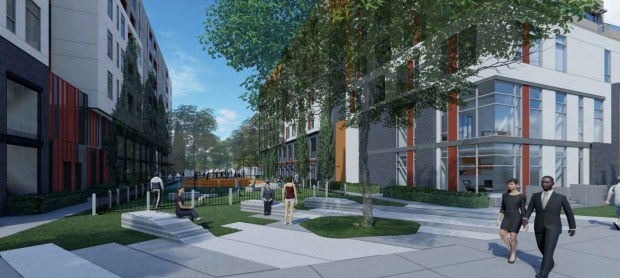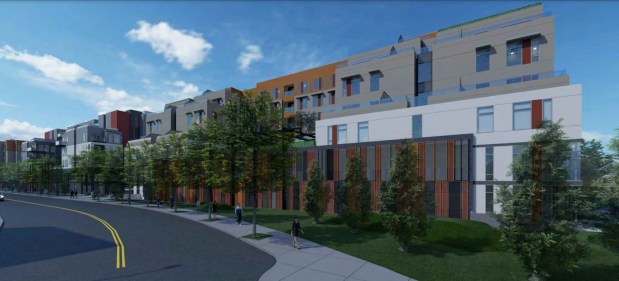SAN JOSE — A mixed-use village planned at a San Jose site near the city’s two mega malls will be built in phases, a move that delays part of the project at a time when the real estate market’s financing outlook has turned murky.
The changes involve the Stevens Creek Promenade project, located a short distance from the Westfield Valley Fair mall and Santana Row village in San Jose, documents on file with city officials show.

The phased approach that will delay a big chunk of the 4300 Stevens Creek Boulevard development for at least a year is just the latest major change to a project that has been touted as a major upgrade for this area of west San Jose.
When originally conceived, Stevens Creek Promenade was expected to feature 233,000 to 300,000 square feet of office space, up to 582 apartment units and as much as 22,000 square feet of retail and restaurant spaces on the ground floor.

The next version of the proposal scrapped all of the office space and whittled down the retail — but added affordable housing to the mix for the first time. A 250-room hotel was also proposed in this second version of he project. The project would also include 10,800 square feet of retail.
The most recent vision for Stevens Creek Promenade would produce a 173-unit affordable apartment building as the first phase of the development.
Two residential buildings with a combined total of 407 market-rate apartments and the 250-room hotel would be developed in the project’s second phase. It wasn’t clear from the new proposal whether any retail would be part of the affordable apartments building.
In 2020, Santa Monica-based Miramar Capital Group and Machine Investment, acting through affiliate MPG Stevens Creek Owner, paid $54.5 million for the site. The property is located on the south side of Stevens Creek Boulevard between Kiely Boulevard and Palace Road.
The latest version of the project would retain one-story office and commercial buildings at 4360 and 4400 Stevens Creek Boulevard, city documents show.
A one-year construction break is anticipated between the two phases of the project. City planning officials have approved the phased approach and the effective delay for the village’s second component.
One of the two market-rate apartment buildings would consist of 216 housing units while the other would produce 191 residences.
Numerous commercial real estate and residential real estate projects are facing uncertain timelines.
More developers are being forced to dodge a growing number of obstacles such as rising costs for construction financing, labor and materials with a backdrop of brutally high inflation and elevated interest rates.
Source: www.mercurynews.com
